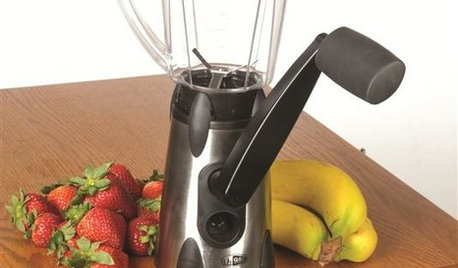easy cheap way to save extra Herbs
kissingfrogs2003
12 years ago
Related Stories

BATHROOM DESIGN15 Cheap and Easy Ways to Makeover Your Bathroom
Makeover Magic Can Happen When You Think Outside the Bathroom Box
Full Story
BUDGET DECORATINGEasy, Beautiful, Cheap: Managing the 3 Points of Home Projects
When you're decorating or building, it helps to be realistic about what's possible. Here are some equations to ponder
Full Story
WINDOW TREATMENTSEasy Green: 9 Low-Cost Ways to Insulate Windows and Doors
Block drafts to boost both warmth and energy savings with these inexpensive but effective insulating strategies
Full Story
GREEN DECORATINGEasy Green: Big and Small Ways to Be More Water-Wise at Home
These 20 tips can help us all make the best use of a precious resource. How do you save water in summer?
Full Story
MOST POPULAREasy Green: 23 Ways to Reduce Waste at Home
Pick from this plethora of earth-friendly ideas to send less to the landfill and keep more money in your pocket
Full Story
REMODELING GUIDES15 Ways to Design an Easy-Clean Home
Spend more time doing what you love with these pointers for minimizing cleaning needs throughout the entire house
Full Story
4 Easy Ways to Renew Your Bathroom Without Remodeling
Take your bathroom from drab to fab without getting out the sledgehammer or racking up lots of charges
Full Story
ACCESSORIESEasy Green: Cut Electricity Use With 15 Unplugged Home Devices
Crank up the energy savings, courtesy of household items that come into power the old-fashioned way: manually
Full Story
BUDGET DECORATING10 Beautiful, Decorative Gifts to Make on the Cheap
Save money while spreading the love with these personal DIY projects (pssst ... you can even keep them for yourself)
Full Story
CONTAINER GARDENS8 Easy Container Plants to Grow From Seed
Get beautiful blooms and herbs in summer by starting these choice garden picks from seed in spring
Full StoryMore Discussions










andrewofthelemon
barbe_wa
Related Professionals
Londonderry Landscape Architects & Landscape Designers · Boca Raton Landscape Contractors · East Chicago Landscape Contractors · El Segundo Landscape Contractors · Medford Landscape Contractors · Oklahoma City Landscape Contractors · Point Pleasant Landscape Contractors · Tehachapi Landscape Contractors · Vineyard Landscape Contractors · Wethersfield Landscape Contractors · Baileys Crossroads Landscape Contractors · Albany Roofing & Gutters · Boca Raton Roofing & Gutters · Woodstock Roofing & Gutters · Valley Stream Roofing & Gutterskissingfrogs2003Original Author
Daisyduckworth